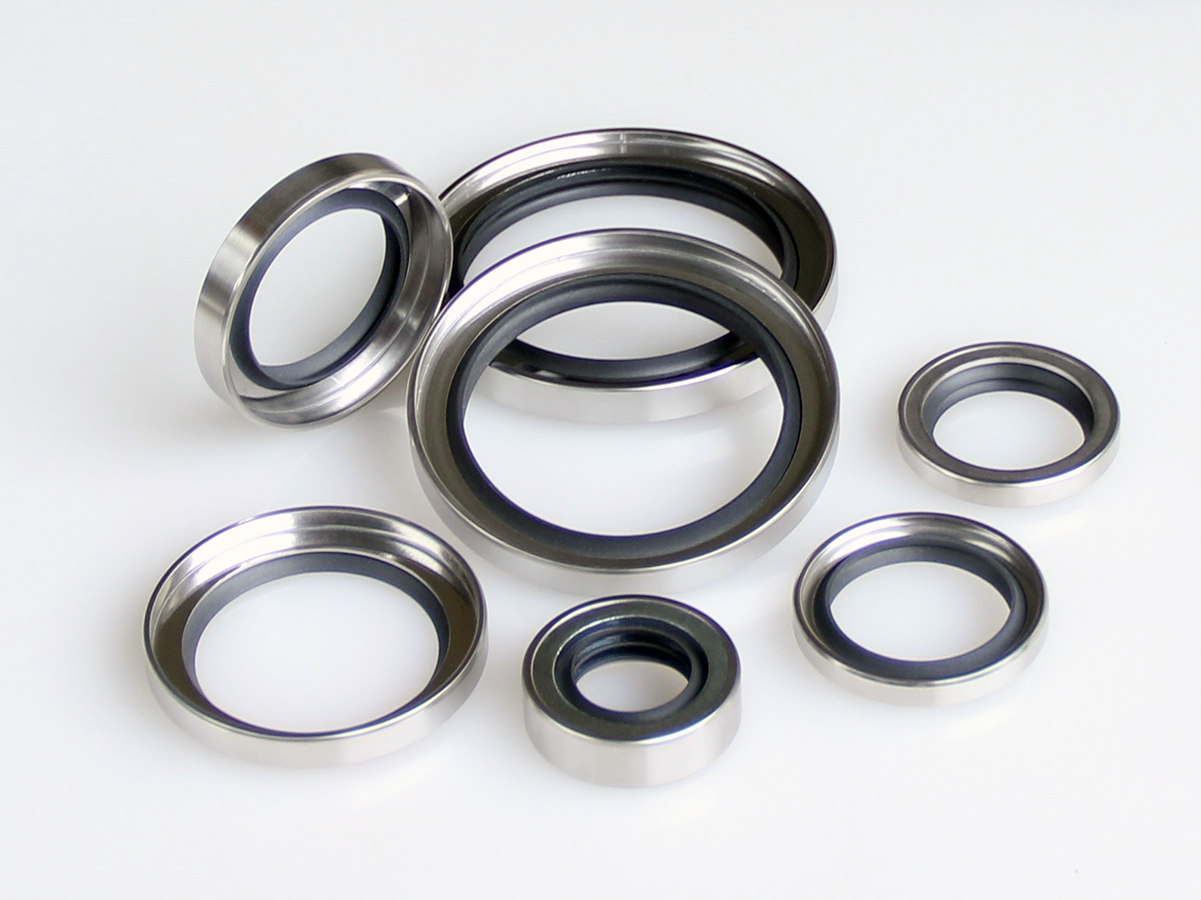Polytetrafluoroethylene (PTFE) oil seals are advanced sealing solutions renowned for their exceptional chemical resistance, low friction, and ability to perform in extreme temperatures. Unlike traditional elastomers like nitrile (NBR) or fluorocarbon rubber (FKM), PTFE seals leverage the unique properties of fluoropolymers to deliver unmatched reliability in demanding industrial applications. This article explores the structure, advantages, and niche uses of PTFE oil seals, addressing common questions about lubrication, leak detection, lifespan, and more.
## Key Takeaways
-
PTFE oil seals excel in harsh environments due to their non-reactive nature, wide temperature range (-200°C to +260°C), and resistance to chemicals, UV, and aging.
-
Unlike nitrile or FKM seals, PTFE requires no lubrication in many applications, reducing maintenance costs.
-
Common applications include automotive engines, aerospace systems, chemical processing, and food-grade machinery.
-
PTFE seals are ideal for industries prioritizing contamination-free performance, such as pharmaceuticals and semiconductors.
-
Proper installation and material selection are critical to maximizing lifespan, which can exceed 10+ years in optimal conditions.
## What Are PTFE Oil Seals?
Definition and Structure
PTFE oil seals are mechanical gaskets designed to retain lubricants and exclude contaminants in rotating or reciprocating shafts. Their structure typically includes:
-
PTFE Lip: A low-friction sealing edge that adapts to shaft imperfections.
-
Spring Loader (Optional): Enhances radial force for high-pressure applications.
-
Metal Case: Stainless steel or carbon steel housing for structural integrity.
-
Anti-Extrusion Rings: Prevent deformation under extreme pressures.
PTFE’s molecular structure—a carbon backbone fully saturated with fluorine atoms—provides inertness against almost all chemicals, including acids, solvents, and fuels. Its ultra-smooth surface minimizes wear and energy loss, making it ideal for dynamic sealing.
## PTFE vs. Nitrile and FKM Oil Seals: Key Differences
| Material | PTFE | Nitrile (NBR) | FKM (Fluorocarbon) |
|---|---|---|---|
| Temperature Range | -200°C to +260°C | -40°C to +120°C | -20°C to +200°C |
| Chemical Resistance | Resists 98% of chemicals | Good for oils, fuels | Excellent for acids, oils |
| Friction Coefficient | 0.02–0.1 (self-lubricating) | 0.3–0.5 (requires grease) | 0.2–0.4 (moderate) |
| Lubrication Needs | Often none required | Frequent re-greasing | Moderate lubrication |
| Lifespan | 10+ years | 2–5 years | 5–8 years |
Why PTFE Wins in Harsh Environments:
-
Dry Running Capability: PTFE’s self-lubricating properties eliminate the need for external greases in many cases, reducing contamination risks.
-
Zero Swell: Unlike elastomers, PTFE resists swelling in hydrocarbon-based fluids.
-
FDA Compliance: PTFE is approved for food and pharmaceutical applications.
## Applications and Working Principles
Where Are PTFE Oil Seals Used?
-
Automotive: Turbocharger shafts, transmission systems, and EV battery cooling systems.
-
Aerospace: Hydraulic actuators and jet engine components.
-
Chemical Processing: Pumps and valves handling aggressive media like sulfuric acid.
-
Semiconductors: Vacuum chambers and plasma etching equipment.
-
Food & Pharma: Mixers and filling machines requiring FDA-compliant seals.
How Do PTFE Seals Work?
PTFE seals function through:
-
Adaptive Sealing: The PTFE lip conforms to minor shaft misalignments or surface irregularities.
-
Minimal Heat Generation: Low friction reduces thermal degradation.
-
Static and Dynamic Sealing: Effective in both stationary and high-speed applications (up to 25 m/s).
## Lubrication Guide: Do PTFE Seals Need Grease?
PTFE’s inherent lubricity often eliminates the need for external lubricants. However, in high-load or high-speed scenarios, silicone-based greases or PFPE (perfluoropolyether) oils are recommended due to their compatibility and thermal stability. Avoid petroleum-based greases, which can degrade PTFE over time.
## How to Detect Oil Seal Leaks
-
Visual Inspection: Look for oil residue around the seal housing.
-
Pressure Testing: Apply air pressure to check for escaping bubbles.
-
Performance Metrics: Monitor temperature spikes or increased energy consumption, indicating friction from a failing seal.
## Engine Oil Seal Lifespan: Factors and Expectations
PTFE oil seals in engines typically last 8–12 years, depending on:
-
Operating Conditions: Extreme temperatures or abrasive contaminants reduce lifespan.
-
Installation Quality: Misalignment during fitting causes premature wear.
-
Material Grade: Reinforced PTFE blends (e.g., glass-filled) enhance durability.
For comparison, nitrile seals in engines last 3–5 years, while FKM lasts 5–7 years.
## Industry Trends: Why PTFE Seals Are Gaining Popularity
-
Sustainability: PTFE’s longevity reduces waste compared to frequent elastomer replacements.
-
Electric Vehicles (EVs): Demand for seals resistant to coolants and high voltages is rising.
-
Industry 4.0: Smart seals with embedded sensors for predictive maintenance are emerging.
## FAQ
Q: Can PTFE seals handle vacuum environments?
A: Yes, PTFE’s low outgassing makes it ideal for vacuum systems in semiconductor manufacturing.
Q: Are PTFE seals recyclable?
A: While PTFE itself is inert, recycling requires specialized processes. Many manufacturers offer take-back programs.
Q: What causes PTFE seals to fail prematurely?
A: Improper installation, chemical incompatibility, or exceeding pressure limits (typically > 30 MPa).
Q: Do you offer custom PTFE seal designs?
A: Yes, [Your Company Name] provides tailored solutions for unique shaft dimensions, pressures, and media.
## Conclusion
PTFE oil seals represent the pinnacle of sealing technology, offering unparalleled performance in industries where failure is not an option. By understanding their advantages over nitrile and FKM, selecting the right lubrication, and adhering to best practices, businesses can significantly reduce downtime and operational costs.
Post time: Mar-03-2025


